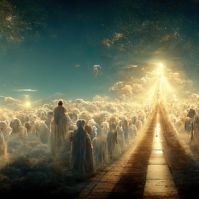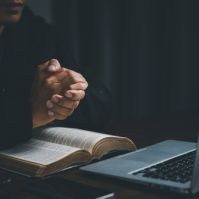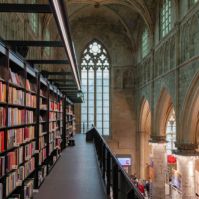 In a surprising turn of events within the Catholic Church, Pope Francis has recently ordered the removal of Bishop Joseph Strickland from the diocese of Tyler, Texas. This decision has brought to the forefront the ongoing clash between conservative and progressive factions within the U.S. Catholic hierarchy. The implications of the Pope's intervention in Texas could be far-reaching.
In a surprising turn of events within the Catholic Church, Pope Francis has recently ordered the removal of Bishop Joseph Strickland from the diocese of Tyler, Texas. This decision has brought to the forefront the ongoing clash between conservative and progressive factions within the U.S. Catholic hierarchy. The implications of the Pope's intervention in Texas could be far-reaching.
Who Is Bishop Joseph Strickland?
Bishop Joseph Strickland, the now-removed bishop of Tyler, Texas, is a prominent figure in the Catholic community of Texas and is well known for having very conservative views. Strickland is 65 years old and is not only a prominent leader in the Chuch but is also active on social media.
He uses social media as a platform to publicly criticize Pope Francis, who he sees as being a danger to the Catholic way of life because of the way he perceives the Pope's stance as progressive. He also regularly aligns himself with conservative media outlets as he decries the supposed worsening state of American values.
Why Did Pope Francis Remove Bishop Strickland?
Experts on the Vatican's political history see Bishop Strickland's removal as a rare move by the Pope. According to official statements by the Vatican, Pope Francis intervened to remove Strickland from his Tyler diocese because the conservative priest refused to limit the use of the Latin Mass. Strickland is just one of many bishops within the Church who represent the traditionalist movement and argue that the Vatican should embrace the Latin Mass once more.
Priests and laypeople in Tyler, Texas, had complained about Bishop Strickland, which prompted the Vatican to investigate Strickland's style of governance. The people around Strickland felt that his rhetoric did not represent the Church and that his claims were unorthodox. Strickland had previously backed conspiracy theories about the COVID-19 pandemic. After the investigation, the Pope took an unusually aggressive stance and removed the bishop before he had the chance to resign.
What Is the Traditionalist Movement in the Catholic Church?
The traditionalist movement represents a faction within the Catholic Church that adheres strictly to traditional teachings and practices. These individuals resist Pope Francis's modernization efforts and changes, particularly his restrictions on the old Latin Mass.
Conducting mass in Latin was the norm before the reforms to the Church led by the Vatican in the 1960s. Priests used to face away from the congregation, speak in Latin, and generally avoid interaction with the laypeople during mass. In an attempt to keep Catholicism relevant, the Vatican urged Catholic priests around the world to update their practices, speak in local languages, and engage with the congregation.
Some conservatives within the Church disagree with these changes, believing the Church should remain mysterious because it is more sacred. Pope Francis argues that people taking the traditionalist stance are doing it for ideological reasons, including bishops like Strickland.
What Are the Consequences of the Pope's Intervention in Texas?
The removal of Bishop Strickland triggered immediate reactions, especially from conservatives and traditionalists who considered him a leading figure against Pope Francis' progressive reforms. Some people have characterized the Pope's intervention as signifying a war against conservatives. Francis has not been shy about expressing concerns regarding right-wing bishops, criticizing what he sees as their ideological backwardness.
The consequences extend beyond the internal dynamics of the Catholic Church. The pope's intervention in the Texas diocese signifies a broader struggle within the Church, reflecting the ongoing tension between tradition and progress. Traditionalists see this as a clash between preserving sacred customs and adapting to the evolving needs of the Catholic community.
Pope Francis' decision to remove Bishop Strickland from the diocese of Tyler has brought to light the deep-seated divisions within the U.S. Catholic hierarchy. The clash between traditionalist views and the pope's progressive agenda has intensified, raising questions about the future direction of the Catholic Church in the United States.



